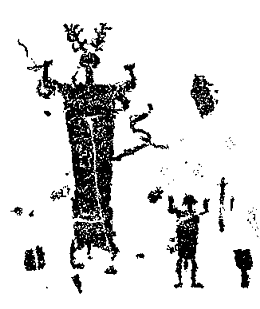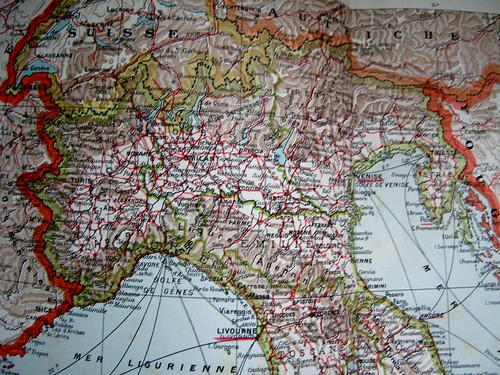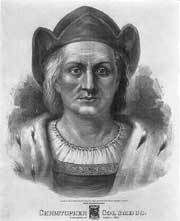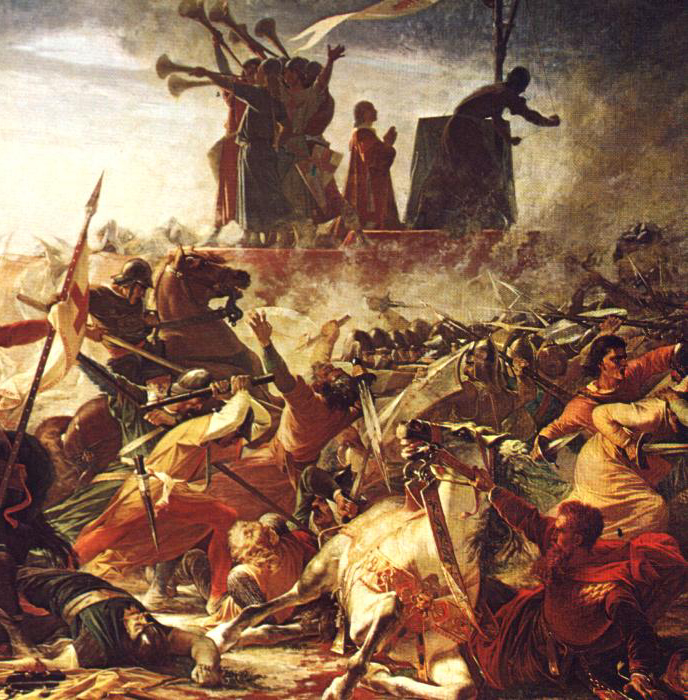 Lombards (1911 Encyclopedia):
Lombards (1911 Encyclopedia):
LOMBARDS, or Langobardi, a Suevic people who appear to have inhabited the lower basin of the Elbe and whose name is believed to survive in the modern Bardengau to the south of Hamburg. They are first mentioned in connexion with the year A.D. 5, at which time they were defeated by the Romans under Tiberius, afterwards emperor. In A.D. 9, however, after the destruction of Varus's army, the Romans gave up their attempt to extend their frontier to the Elbe. At first, with most of the Suevic tribes, they were subject to the hegemony of Maroboduus, king of the Marcomanni, but they revolted from him in his war with Arminius, chief of the Cherusci, in the year 17. We again hear of their interference in the dynastic strife of the Cherusci some time after the year 47. From this time they are not mentioned until the year 165, when a force of Langobardi, in alliance with the Marcomanni, was defeated by the Romans, apparently on the Danubian frontier. It has been inferred from this incident that the Langobardi had already moved southwards, but the force mentioned may very well have been sent from the old home of the tribe, as the various Suevic peoples seem generally to have preserved some form of political union. From this time onwards we hear no more of them until the end of the 5th century.
In their own traditions we are told that the Langobardi were originally called Winnili and dwelt in an island named Scadinavia (with this story compare that of the Gothic migration, see Goths). Thence they set out under the leadership of Ibor and Aio, the sons of a prophetess called Gambara, and came into conflict with the Vandals. The leaders of the latter prayed to Wodan for victory, while Gambara and her sons invoked Frea. Wodan promised to give victory to those whom he should see in front of him at sunrise. Frea directed the Winnili to bring their women with their hair let down round their faces like beards and turned Wodan's couch round so that he faced them. When Wodan awoke at sunrise he saw the host of the Winnili and said, "Qui sunt isti Longibarbi ?" - " Who are these long-beards?" and Frea replied, "As thou hast given them the name, give them also the victory." They conquered in the battle and were thenceforth known as Langobardi. After this they are said to have wandered through regions which cannot now be identified, apparently between the Elbe and the Oder, under legendary kings, the first of whom was Agilmund, the son of Aio.
Shortly before the end of the 5th century the Langobardi appear to have taken possession of the territories formerly occupied by the Rugii whom Odoacer had overthrown in 487, a region which probably included the present province of Lower Austria. At this time they were subject to Roduif, king of the Heruli, who, however, took up arms against them; according to one story, owing to the treacherous murder of Rodulf's brother, according to another through an irresistible desire for fighting on the part of his men. The result was the total defeat of the Heruli by the Langobardi under their king Tato and the death of Roduif at some date between 493 and 508. By this time the Langobardi are said to have adopted Christianity in its Arian form. Tato was subsequently killed by his nephew Waccho. The latter reigned for thirty years, though frequent attempts were made by Ildichis, a son or grandson of Tato, to recover the throne. Waccho is said to have conquered the Suabi, possibly the Bavarians, and he was also involved in strife with the Gepidae, with whom Ildichis had taken refuge. He was succeeded by his youthful son Walthari, who reigned only seven years under the guardianship of a certain Audoin. On Walthari's death (about 546 ?) Audoin succeeded. He also was involved in hostilities with the Gepidae, whose support of Ildichis he repaid by protecting Ustrogotthus, a rival of their king Thorisind. In these quarrels both nations aimed at obtaining the support of the emperor Justinian, who, in pursuance of his policy of playing off one against the other, invited the Langobardi into Noricum and Pannonia, where they now settled. A large force of Lombards under Audoin fought on the imperial side at the battle of the Apennines against the Ostrogothic king Totila in 5 53, but the assistance of Justinian, though often promised, had no effect on the relations of the two nations, which were settled for the moment after a series of truces by the victory of the Langobardi, probably in 554. The resulting peace was sealed by the murder of Ildichis and Ustrogotthus, and the Langobardi seem to have continued inactive until the death of Audoin, perhaps in 565, and the accession of his son Alboin, who had won a great reputation in the wars with the Gepidae. It was about this time that the Avars, under their first Chagun Baian, entered Europe, and with them Alboin is said to have made an alliance against the Gepidae under their new king Cunimund. The Avars, however, did not take part in the final battle, in which the Langobardi were completely victorious. Alboin, who had slain Cunimund in the battle, now took Rosamund, daughter of the dead king, to be his wife.
In 568 Alboin and the Langobardi, in accordance with a compact made with Baian, which is recorded by Menander, abandoned their old homes to the Avars and passed southwards into Italy, were they were destined to found a new and mighty kingdom. (F. G. M. B.) The Lombard Kingdom in Italy. - In 568 Alboin, king of the Langobards, with the women and children of the tribe and all their possessions, with Saxon allies, with the subject tribe of the Gepidae and a mixed host of other barbarians, descended into Italy by the great plain at the head of the Adriatic. The war which had ended in the downfall of the Goths had exhausted Italy; it was followed by famine and pestilence; and the government at Constantinople made but faint efforts to retain the province which Belisarius and Narses had recovered for it. Except in a few fortified places, such as Ticinum or Pavia, the Italians did not venture to encounter the new invaders; and, though Alboin was not without generosity, the Lombards, wherever resisted, justified the opinion of their ferocity by the savage cruelty of the invasion. In 57 2, according to the Lombard chronicler, Alboin fell a victim to the revenge of his wife Rosamund, the daughter of the king of the Gepidae, whose skull Alboin had turned into a drinking cup, out of which he forced Rosamund to drink. By this time the Langobards had established themselves in the north of Italy. Chiefs were placed, or placed themselves, first in the border cities, like Friuli and Trent, which commanded the north-eastern passes, and then in other principal places; and this arrangement became characteristic of the Lombard settlement. The principal seat of the settlement was the rich plain watered by the Po and its affluents, which was in future to receive its name from them; but their power extended across the Apennines into Liguria and Tuscany, and then southwards to the outlying dukedoms of Spoleto and Benevento. The invaders failed to secure any maritime ports or any territory that was conveniently commanded from the sea. Ticinum (Pavia), the one place which had obstinately resisted Alboin, became the seat of their kings.
After the short and cruel reign of Cleph, the successor of Alboin, the Lombards (as we may begin for convenience sake to call them) tried for ten years the experiment of a national confederacy of their dukes (as, after the Latin writers, their chiefs are styled), without any king. It was the rule of some thirty-five or thirty-six petty tyrants, under whose oppression and private wars even the invaders suffered. With anarchy among themselves and so precarious a hold on the country, hated by the Italian population and by the Catholic clergy, threatened also by an alliance of the Greek empire with their persistent rivals the Franks beyond the Alps, they resolved to sacrifice their independence and elect a king. In 584 they chose Authari, the grandson of Alboin, and endowed the royal domain with a half of their possessions. From this time till the fall of the Lombard power before the arms of their rivals the Franks under Charles the Great, the kingly rule continued. Authari, "the Longhaired," with his Roman title of Flavius, marks the change from the war king of an invading host to the permanent representative of the unity and law of the nation, and the increased power of the crown, by the possession of a great domain, to enforce its will. The independence of the dukes was surrendered to the king. The dukedoms in the neighbourhood of the seat of power were gradually absorbed, and their holders transformed into royal officers. Those of the northern marches, Trent and Friuli, with the important dukedom of Turin, retained longer the kind of independence which marchlands usually give where invasion is to be feared. The great dukedom of Benevento in the south, with its neighbour Spoleto, threatened at one time to be a separate principality, and even to the last resisted, with varying success, the full claims of the royal authority at Pavia.
The kingdom of the Lombards lasted more than two hundred years, from Alboin (568) to the fall of Desiderius (774) - much longer than the preceding Teutonic kingdom of Theodoric and the Goths. But it differed from the other Teutonic conquests in Gaul, in Britain, in Spain. It was never complete in point of territory: there were always two, and almost to the last three, capitals - the Lombard one, Pavia; the Latin one, Rome; the Greek one, Ravenna; and the Lombards never could get access to the sea. And it never was complete over the subject race: it profoundly affected the Italians of the north; in its turn it was entirely transformed by contact with them; but the Lombards never amalgamated with the Italians till their power as a ruling race was crushed by the victory given to the Roman element by the restored empire of the Franks. The Langobards, German in their faults and in their strength, but coarser, at least at first, than the Germans whom the Italians had known, the Goths of Theodoric and Totila, found themselves continually in the presence of a subject population very different from anything which the other Teutonic conquerors met with among the provincials - like them, exhausted, dispirited, unwarlike, but with the remains and memory of a great civilization round them, intelligent, subtle, sensitive, feeling themselves infinitely superior in experience and knowledge to the rough barbarians whom they could not fight, and capable of hatred such as only cultivated races can nourish. The Lombards who, after they had occupied the lands and cities of Upper Italy, still went on sending forth furious bands to plunder and destroy where they did not care to stay, never were able to overcome the mingled fear and scorn and loathing of the Italians. They adapted themselves very quickly indeed to many Italian fashions. Within thirty years of the invasions, Authari took the imperial title of Flavius, even while his bands were leading Italian captives in leash like dogs under the walls of Rome, and under the eyes of Pope Gregory; and it was retained by his successors. They soon became Catholics; and then in all the usages of religion, in church building, in founding monasteries, in their veneration for relics, they vied with Italians. Authari's queen, Theodelinda, solemnly placed the Lombard nation under the patronage of St John the Baptist, and at Monza she built in his honour the first Lombard church, and the royal palace near it. King Liutprand (712744) bought the relics of St Augustine for a large sum to be placed in his church at Pavia. Their Teutonic speech disappeared; except in names and a few technical words all traces of it are lost. But to the last they had the unpardonable crime of being a ruling barbarian race or caste in Italy. To the end they are "nefandissimi," execrable, loathsome, filthy. So wrote Gregory the Great when they first appeared. So wrote Pope Stephen IV., at the end of their rule, when stirring up the kings of the Franks to destroy them.
Authari's short reign (584-591) was one of renewed effort for conquest. It brought the Langobards face to face, not merely with the emperors at Constantinople, but with the first of the great statesmen popes, Gregory the Great (590-604). But Lombard conquest was bungling and wasteful; when they had spoiled a city they proceeded to tear down its walls and raze it to the ground. Authari's chief connexion with the fortunes of his people was an important, though an accidental one. The Lombard chronicler tells a romantic tale of the way in which Authari sought his bride from Garibald, duke of the Bavarians, how he went incognito in the embassy to judge of her attractions, and how she recognized her disguised suitor. The bride was the Christian Theodelinda, and she became to the Langobards what Bertha was to the Anglo-Saxons and Clotilda to the Franks.
 She became the mediator between the Lombards and the Catholic Church. Authari, who had brought her to Italy, died shortly after his marriage. But Theodelinda had so won on the Lombard chiefs that they bid her as queen choose the one among them whom she would have for her husband and for king. She chose Agilulf, duke of Turin (592-615). He was not a true Langobard, but a Thuringian. It was the beginning of peace between the Lombards and the Catholic clergy. Agilulf could not abandon his traditional Arianism, and he was a very uneasy neighbour, not only to the Greek exarch, but to Rome itself. But he was favourably disposed both to peace and to the Catholic Church. Gregory interfered to prevent a national conspiracy against the Langobards, like that of St Brice's day in England against the Danes, or that later uprising against the French, the Sicilian Vespers. He was right both in point of humanity and of policy. The Arian and Catholic bishops went on for a time side by side; but the Lombard kings and clergy rapidly yielded to the religious influences around them, even while the national antipathies continued unabated and vehement. Gregory, who despaired of any serious effort on the part of the Greek emperors to expel the Lombards, endeavoured to promote peace between the Italians and Agilulf; and, in spite of the feeble hostility of the exarchs of Ravenna, the pope and the king of the Lombards became the two real powers in the north and centre of Italy. Agilulf was followed, after two unimportant reigns, by his son-in-law, the husband of Theodelinda's daughter, King Rothari (636-652), the Lombard legislator, still an Arian though he favoured the Catholics. He was the first of their kings who collected their customs under the name of laws - and he did this, not in their own Teutonic dialect, but in Latin. The use of Latin implies that the laws were to be not merely the personal law of the Lombards, but the law of the land, binding on Lombards and Romans alike. But such rude legislation could not provide for all questions arising even in the decayed state of Roman civilization.' It is probable that among themselves the Italians kept to their old usages and legal precedents where they were not overridden by the conquerors' law, and by degrees a good many of the Roman civil arrangements made their way into the Lombard code, while all ecclesiastical ones, and they were a large class, were untouched by it.
She became the mediator between the Lombards and the Catholic Church. Authari, who had brought her to Italy, died shortly after his marriage. But Theodelinda had so won on the Lombard chiefs that they bid her as queen choose the one among them whom she would have for her husband and for king. She chose Agilulf, duke of Turin (592-615). He was not a true Langobard, but a Thuringian. It was the beginning of peace between the Lombards and the Catholic clergy. Agilulf could not abandon his traditional Arianism, and he was a very uneasy neighbour, not only to the Greek exarch, but to Rome itself. But he was favourably disposed both to peace and to the Catholic Church. Gregory interfered to prevent a national conspiracy against the Langobards, like that of St Brice's day in England against the Danes, or that later uprising against the French, the Sicilian Vespers. He was right both in point of humanity and of policy. The Arian and Catholic bishops went on for a time side by side; but the Lombard kings and clergy rapidly yielded to the religious influences around them, even while the national antipathies continued unabated and vehement. Gregory, who despaired of any serious effort on the part of the Greek emperors to expel the Lombards, endeavoured to promote peace between the Italians and Agilulf; and, in spite of the feeble hostility of the exarchs of Ravenna, the pope and the king of the Lombards became the two real powers in the north and centre of Italy. Agilulf was followed, after two unimportant reigns, by his son-in-law, the husband of Theodelinda's daughter, King Rothari (636-652), the Lombard legislator, still an Arian though he favoured the Catholics. He was the first of their kings who collected their customs under the name of laws - and he did this, not in their own Teutonic dialect, but in Latin. The use of Latin implies that the laws were to be not merely the personal law of the Lombards, but the law of the land, binding on Lombards and Romans alike. But such rude legislation could not provide for all questions arising even in the decayed state of Roman civilization.' It is probable that among themselves the Italians kept to their old usages and legal precedents where they were not overridden by the conquerors' law, and by degrees a good many of the Roman civil arrangements made their way into the Lombard code, while all ecclesiastical ones, and they were a large class, were untouched by it.
There must have been much change of property; but appearances are conflicting as to the terms on which land generally was held by the old possessors or the new corners, and as to the relative legal position of the two. Savigny held that, making allowance for the anomalies and usurpations of conquest, the Roman population held the bulk of the land as they had held it before, and were governed by an uninterrupted and acknowledged exercise of Roman law in their old municipal organization. Later inquirers, including Leo, Troya and Hegel, have found that the supposition does not tally with a whole series of facts, which point to a Lombard territorial law ignoring completely any parallel Roman and personal law, to a great restriction of full civil rights among the Romans, analogous to the condition of the rayah under the Turks, and to a reduction of the Roman occupiers to a class of half-free "aldii," holding immovable tenancies under lords of superior race and privilege, and subject to the sacrifice either of the third part of their holdings or the third part of the produce. The Roman losses, both of property and rights, were likely to be great at first; how far they continued permanent during the two centuries of the Lombard kingdom, or how far the legal distinctions between Rome and Lombard gradually passed into desuetude, is a further question. The legislation of the Lombard kings, in form a territorial and not a personal law, shows no signs of a disposition either to depress or to favour the Romans, but only the purpose to maintain, in a rough fashion, strict order and discipline impartially among all their subjects.
From Rothari (d. 652) to Liutprand (712-744) the Lombard kings, succeeding one another in the irregular fashion of the time, sometimes by descent, sometimes by election, sometimes by conspiracy and violence, strove fitfully to enlarge their boundaries, and contended with the aristocracy of dukes inherent in the original organization of the nation, an element which, though much weakened, always embarrassed the power of the crown, and checked the unity of the nation. Their old enemies the Franks on the west, and the Sla y s or Huns, ever ready to break in on the north-east, and sometimes called in by mutinous and traitorous dukes of Friuli and Trent, were constant and serious dangers. By the popes, who represented Italian interests, they were always looked upon with dislike and jealousy, even when they had become zealous Catholics, the founders of churches and monasteries; with the Greek empire there was chronic war. From time to time they made raids into the unsubdued parts of Italy, and added a city or two to their dominions. But there was no sustained effort for the complete subjugation of Italy till Liutprand, the most powerful of the line. He tried it, and failed. He broke up the independence of the great southern duchies, Benevento and Spoleto. For a time, in the heat of the dispute about images, he won the pope to his side against the Greeks. For a time, but only for a time, he deprived the Greeks of Ravenna. Aistulf, his successor, carried on the same policy. He even threatened Rome itself, and claimed a capitation tax. But the popes, thoroughly irritated and alarmed, and hopeless of aid from the East, turned to the family which was rising into power among the Franks of the West, the mayors of the palace of Austrasia. Pope Gregory III. applied in vain to Charles Martel. But with his successors Pippin and Charles the popes were more successful. In return for the transfer by the pope of the Frank crown from the decayed line of Clovis to his own, Pippin crossed the Alps, defeated Aistulf and gave to the pope the lands which Aistulf had torn from the empire, Ravenna and the Pentapolis (754-756). But the angry quarrels still went on between the popes and the Lombards. The Lombards were still to the Italians a "foul and horrid" race. At length, invited by Pope Adrian I., Pippin's son Charlemagne once more descended into Italy. As the Lombard kingdom began, so it ended, with a siege of Pavia. Desiderius, the last king, became a prisoner (774), and the Lombard power perished. Charlemagne, with the title of king of the Franks and Lombards, became master of Italy, and in 800 the pope, who had crowned Pippin king of the Franks; claimed to bestow the Roman empire, and crowned his greater son emperor of the Romans (800).
Effects of the Carolingian Conquest
To Italy the overthrow of the Lombard kings was the loss of its last chance of independence and unity. To the Lombards the conquest was the destruction of their legal and social supremacy. Henceforth they were equally with the Italians the subjects of the Frank kings. The Carolingian kings expressly recognized the Roman law, and allowed all who would be counted Romans to "profess" it. But Latin influences were not strong enough to extinguish the Lombard name and destroy altogether the recollections and habits of the Lombard rule; Lombard law was still recognized, and survived in the schools of Pavia. Lombardy remained the name of the finest province of Italy, and for a time was the name for Italy itself But what was specially Lombard could not stand in the long run against the Italian atmosphere which surrounded it. Generation after generation passed more and more into real Italians. Antipathies, indeed, survived, and men even in the 10th century called each other Roman or Langobard as terms of reproach. But the altered name of Lombard also denoted henceforth some of the proudest of Italians; and, though the Lombard speech had utterly perished their most common names still kept up the remembrance that their fathers had come from beyond the Alps.
But the establishment of the Frank kingdom, and still more the re-establishment of the Christian empire as the source of law and jurisdiction in Christendom, had momentous influence on the history of the Italianized Lombards. The Empire was the counterweight to the local tyrannies into which the local authorities established by the Empire itself, the feudal powers, judicial and military, necessary for the purposes of government, invariably tended to degenerate. When they became intolerable, from the Empire were sought the exemptions, privileges, immunities from that local authority, which, anomalous and anarchical as they were in theory, yet in fact were the foundations of all the liberties of the middle ages in the Swiss cantons, in the free towns of Germany and the Low Countries, in the Lombard cities of Italy. Italy was and ever has been a land of cities; and, ever since the downfall of Rome and the decay of the municipal system, the bishops of the cities had really been at the head of the peaceful and industrial part of their population, and were a natural refuge for the oppressed, and sometimes for the mutinous and the evil doers, from the military and civil powers of the duke or count or judge, too often a rule of cruelty or fraud. Under the Carolingian empire, a vast system grew up in the North Italian cities of episcopal "immunities," by which a city with its surrounding district was removed, more or less completely, from the jurisdiction of the ordinary authority, military or civil, and placed under that of the bishop. These "immunities" led to the temporal sovereignty of the bishops; under it the spirit of liberty grew more readily than under the military chief. Municipal organization, never quite forgotten, naturally revived under new forms, and with its "consuls" at the head of the citizens, with its "arts" and "crafts" and "gilds," grew up secure under the shadow of the church. In due time the city populations, free from the feudal yoke, and safe within the walls which in many instances the bishops had built for them, became impatient also of the bishop's government. The cities which the bishops had made thus independent of the dukes and counts next sought to be free from the bishops; in due time they too gained their charters of privilege and liberty. Left to take care of themselves, islands in a sea of turbulence, they grew in the sense of self-reliance and independence; they grew also to be aggressive, quarrelsome and ambitious. Thus, by the nth century, the Lombard cities had become "communes," commonalties, republics, managing their own affairs, and ready for attack or defence. Milan had recovered its greatness, ecclesiastically as well as politically; it scarcely bowed to Rome, and it aspired to the position of a sovereign city, mistress over its neighbours. At length, in the 12th century, the inevitable conflict came between the republicanism of the Lombard cities and the German feudalism which still claimed their allegiance in the name of the Empire. Leagues and counterleagues were formed; and a confederacy of cities, with Milan at its head, challenged the strength of Germany under one of its sternest emperors, Frederick Barbarossa. At first Frederick was victorious; Milan, except its churches, was utterly destroyed; everything that marked municipal independence was abolished in the "rebel" cities; and they had to receive an imperial magistrate instead of their own (1158-1162). But the Lombard league was again formed. Milan was rebuilt, with the help even of its jealous rivals, and at Legnano (1176) Frederick was utterly defeated. The Lombard cities had regained their independence; and at the peace of Constance (1183) Frederick found himself compelled to confirm it.
From the peace of Constance the history of the Lombards is merely part of the history of Italy. Their cities went through the ordinary fortunes of most Italian cities. They quarrelled and fought with one another. They took opposite sides in the great strife of the time between pope and emperor, and were Guelf and Ghibelline by old tradition, or as one or other faction prevailed in them. They swayed backwards and forwards between the power of the people and the power of the few; but democracy and oligarchy passed sooner or later into the hands of a master who veiled his lordship under various titles, and generally at last into the hands of a family. Then, in the larger political struggles and changes of Europe, they were incorporated into a kingdom, or principality or duchy, carved out to suit the interest of a foreigner, or to make a heritage for the nephew of a pope. But in two ways especially the energetic race which grew out of the fusion of Langobards and Italians between the 9th and the 12th centuries has left the memory of itself. In England, at least, the enterprising traders and bankers who found their way to the West, from the 13th to the 16th centuries, though they certainly did not all come from Lombardy, bore the name of Lombards. In the next place, the Lombards or the Italian builders whom they employed or followed, the "masters of Como," of whom so much is said in the early Lombard laws, introduced a manner of building, stately, solemn and elastic, to which their name has been attached, and which gives a character of its own to some of the most interesting churches in Italy. (R. W. C.)
***************************************************************************
I know that we have covered the Lombards extensively, but have never actually put an encyclopedia entry for them. The 1911 Encyclopedia is an old-style reference, without much of the modern "political correctness," and is just generally is more in-depth.
 If you're familiar with this blog, then you are familiar with Cernunnos. The worship of the antlered male god of the forest, and the goddess, which was part of Western European culture for probably tens of thousands of years. This practice was part of Cisalpine Gaul more than anywhere else. It was widespread in Gaul, and even into Scandinavia. We don't need to rehash how certain religions have turned "infidels," "heathens," "witches," etc., into dirty words.
If you're familiar with this blog, then you are familiar with Cernunnos. The worship of the antlered male god of the forest, and the goddess, which was part of Western European culture for probably tens of thousands of years. This practice was part of Cisalpine Gaul more than anywhere else. It was widespread in Gaul, and even into Scandinavia. We don't need to rehash how certain religions have turned "infidels," "heathens," "witches," etc., into dirty words. Lets stop using "witchcraft" or "Wicca," and use CERNISM or the CERNIC TRADITION in this Celtic awakening. Lastly, it should be mentioned that the culture of Cisalpine Gaul was "Celto-Ligurian" rather than Celtic. The Alpine tribes were also a big part of the culture.
Lets stop using "witchcraft" or "Wicca," and use CERNISM or the CERNIC TRADITION in this Celtic awakening. Lastly, it should be mentioned that the culture of Cisalpine Gaul was "Celto-Ligurian" rather than Celtic. The Alpine tribes were also a big part of the culture.

















